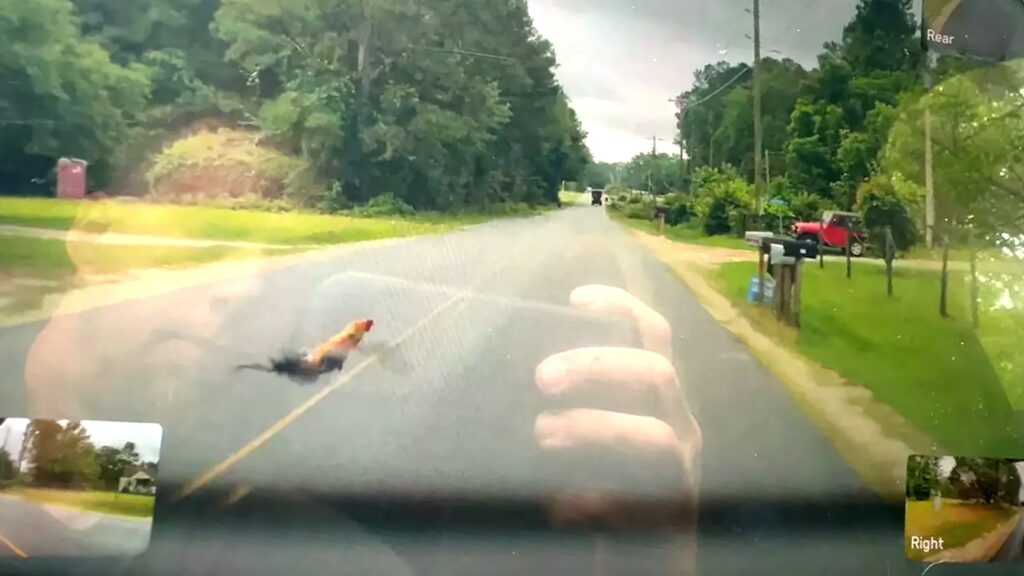Why Did the Chicken Cross the Road?

Ah, the age-old question gets a modern twist with self-driving technology. There’s something about seeing Tesla’s Full Self-Driving (FSD) tech encounter everyday scenarios that can be both hilarious and thought-provoking. Recent footage shared on the Cybertruckownersclub forum shows a Tesla having a peculiar interaction with a chicken. This incident becomes a bit of an anecdote illustrating the challenges FSD faces as it learns to navigate our complex world.
FSD and Small Animals
The video captures a chicken’s ill-fated attempt to traverse the road while a Tesla cruises at approximately 45 mph. Despite its advanced sensors and continuous updates from real-world driving data, Tesla’s FSD seems to falter with smaller creatures like birds. Although there was no indication of the vehicle acknowledging the impact, the forum discussion pointed out how these incidents remain under the radar for the advanced FSD system.
Other Encounters
Strikingly, similar accounts were corroborated by other Tesla drivers. One user recounted an episode where they had to manually intervene to avoid an owl on the road. This raises the question – is Tesla’s current FSD tech optimized for spotting or reacting to animals that don’t qualify as a typical hazard? It might hint at potential areas for improvement as the technology evolves.
Successful Avoidance Cases
To be fair, not all experiences were negative. Another user shared a clip where their Tesla successfully stopped for a Canadian Goose that was comfortably planted in the lane’s center. It makes one wonder whether situations like these are flukes or indicative of gradual improvements in the system’s capability to recognize more than just human-sized obstacles.
Comparisons with Other Vehicles
Comparing Tesla’s FSD with other vehicles’ autonomous systems reveals diverse approaches to automation. Many manufacturers use lidar or radar to enhance object detection, which some argue offers more reliable animal and obstacle recognition. Tesla’s system relies heavily on cameras and real-time data, which while innovative, might still lack the nuance needed for certain scenarios like these. As the technology continues to develop, scenarios involving wildlife may drive improvements in sensor technology and software processing.
Driving Experience
Driving a Tesla equipped with FSD offers a sensation quite distinct from that of traditional vehicles. While other advanced driver-assistance systems from competitors like GM’s Super Cruise or Ford’s BlueCruise emphasize hands-free capabilities, Tesla’s FSD focuses more on adaptation and learning. This can lead to an experience that feels like riding with an ambitious but unconventional learner who’s both promising and sometimes unpredictable.
Ultimately, Tesla’s FSD technology, while impressive, highlights the complexity of fully autonomous driving. The bird encounter is a fitting reminder that self-driving tech is on a spirited journey—one that has fascinating lessons to teach on the road to becoming more intuitive and comprehensive.
Rivian R2 Electric SUV
Enyaq RS Unleashed
New Tata Harrier EV
BMW Delays 5 Series Revamp
Luxury EV Redefined